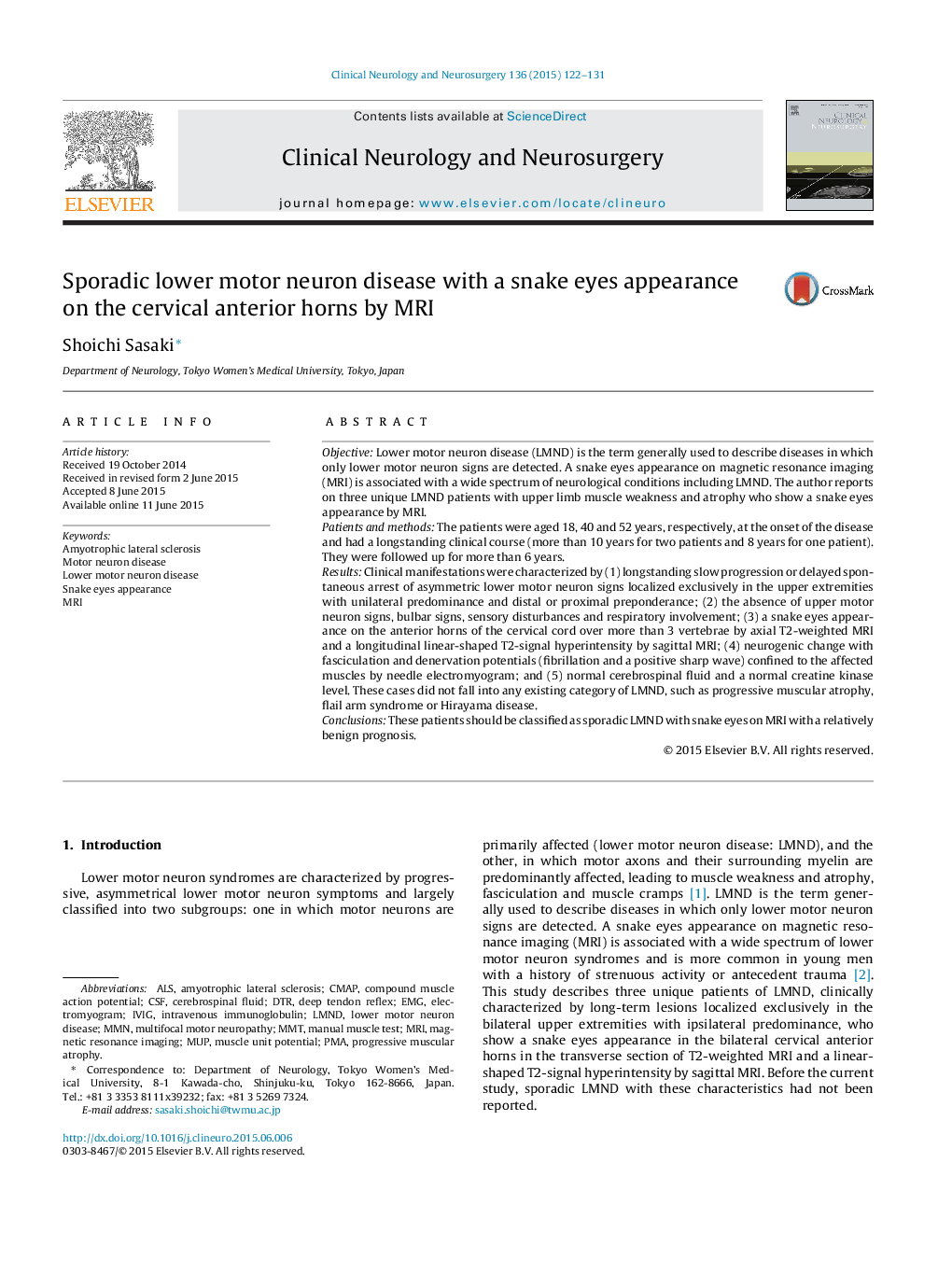| کد مقاله | کد نشریه | سال انتشار | مقاله انگلیسی | نسخه تمام متن |
|---|---|---|---|---|
| 3039835 | 1579686 | 2015 | 10 صفحه PDF | دانلود رایگان |

• Lower motor neuron disease (LMND) is the term to describe diseases having only lower motor neuron signs.
• The author reports on three unique LMND patients with a snake eyes appearance by MRI.
• The patients were aged 18, 40 and 52 years at the onset and have slow progression.
• Asymmetric, pure lower motor neuron upper limb weakness and atrophy are observed.
• They should be classified as sporadic LMND with snake eyes with a benign prognosis.
ObjectiveLower motor neuron disease (LMND) is the term generally used to describe diseases in which only lower motor neuron signs are detected. A snake eyes appearance on magnetic resonance imaging (MRI) is associated with a wide spectrum of neurological conditions including LMND. The author reports on three unique LMND patients with upper limb muscle weakness and atrophy who show a snake eyes appearance by MRI.Patients and methodsThe patients were aged 18, 40 and 52 years, respectively, at the onset of the disease and had a longstanding clinical course (more than 10 years for two patients and 8 years for one patient). They were followed up for more than 6 years.ResultsClinical manifestations were characterized by (1) longstanding slow progression or delayed spontaneous arrest of asymmetric lower motor neuron signs localized exclusively in the upper extremities with unilateral predominance and distal or proximal preponderance; (2) the absence of upper motor neuron signs, bulbar signs, sensory disturbances and respiratory involvement; (3) a snake eyes appearance on the anterior horns of the cervical cord over more than 3 vertebrae by axial T2-weighted MRI and a longitudinal linear-shaped T2-signal hyperintensity by sagittal MRI; (4) neurogenic change with fasciculation and denervation potentials (fibrillation and a positive sharp wave) confined to the affected muscles by needle electromyogram; and (5) normal cerebrospinal fluid and a normal creatine kinase level. These cases did not fall into any existing category of LMND, such as progressive muscular atrophy, flail arm syndrome or Hirayama disease.ConclusionsThese patients should be classified as sporadic LMND with snake eyes on MRI with a relatively benign prognosis.
Journal: Clinical Neurology and Neurosurgery - Volume 136, September 2015, Pages 122–131